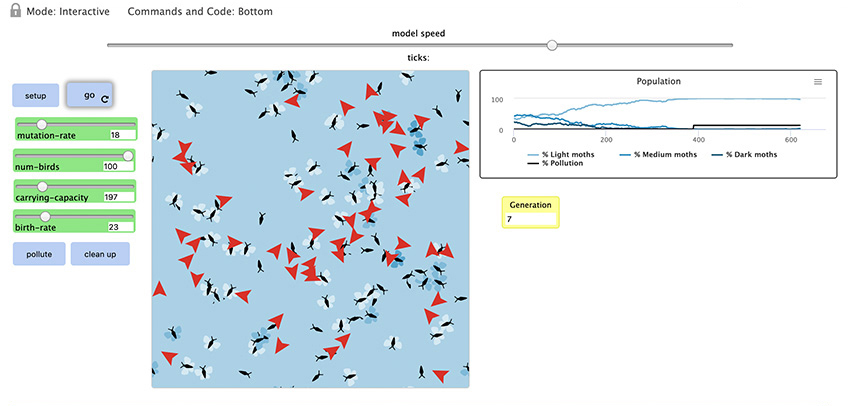Natural Selection
Problem of practice:
Evolution occurs over time spans too long to be captured in a typical classroom. Images and diagrams are often used to show species change over time. Students learning about inheritance and variation of traits initially may believe that all traits are adaptive and that natural selection involves organisms trying to adapt.

Our solution:
The Biology+C Natural Selection unit features a Peppered Moth model in NetLogo. In this model students can experiment with polluting and cleaning up the environment in which the moths live. Students can then run time, and thus generations of the population, quickly. The experience of manipulating this virtual world and seeing the resultant outcome for moths will mitigate the misconception that all traits are adaptive.
What students will learn:
With gradual changes to the environment, students witness the depletion of moths of one color and resulting change to the population overall, whereas rapid changes to the environment can result in the moths becoming extinct. Further, when looking “under the hood” at the model’s code, students can find that the underlying mechanism in this model is birds’ (represented as red beaks) ability to spot and eat the moths.
Full Biology+C units list:
Introductory Unit: Epidemic: Introduction to Modeling and Simulation
Plus:
- Simple Ecosystems: Energy Flow in an Ecosystem
- Experimenting with Photosynthesis
- Enzymes: Food Digestion
- Homeostasis: Food Digestion
- Natural Selection: Natural Selection in Moths
- Genetics: Phenotypes and Genotypes
- Ecosystems Dynamics: Balancing an Ecosystem
If you would like access to these Biology units, please complete the Science+C Interest Form.